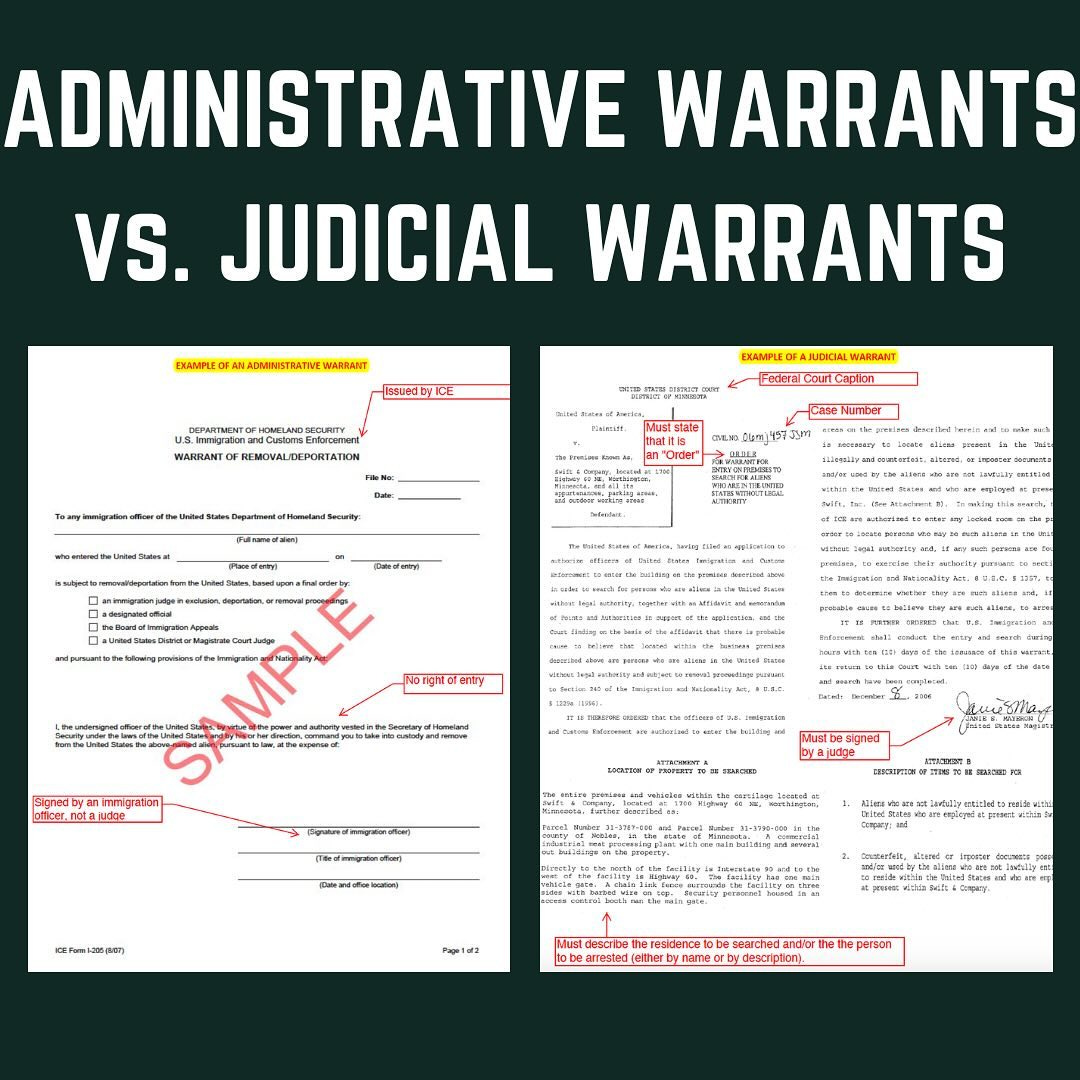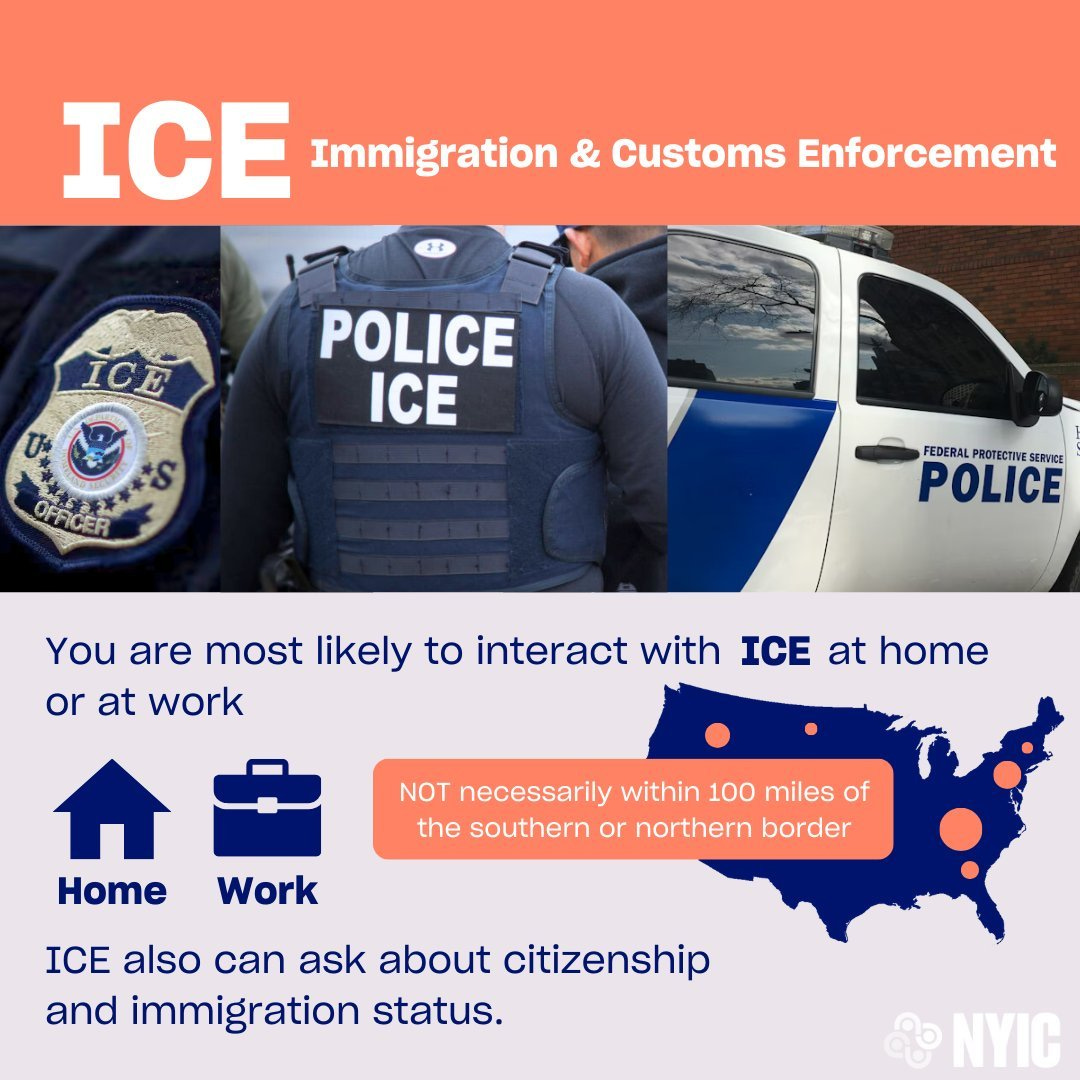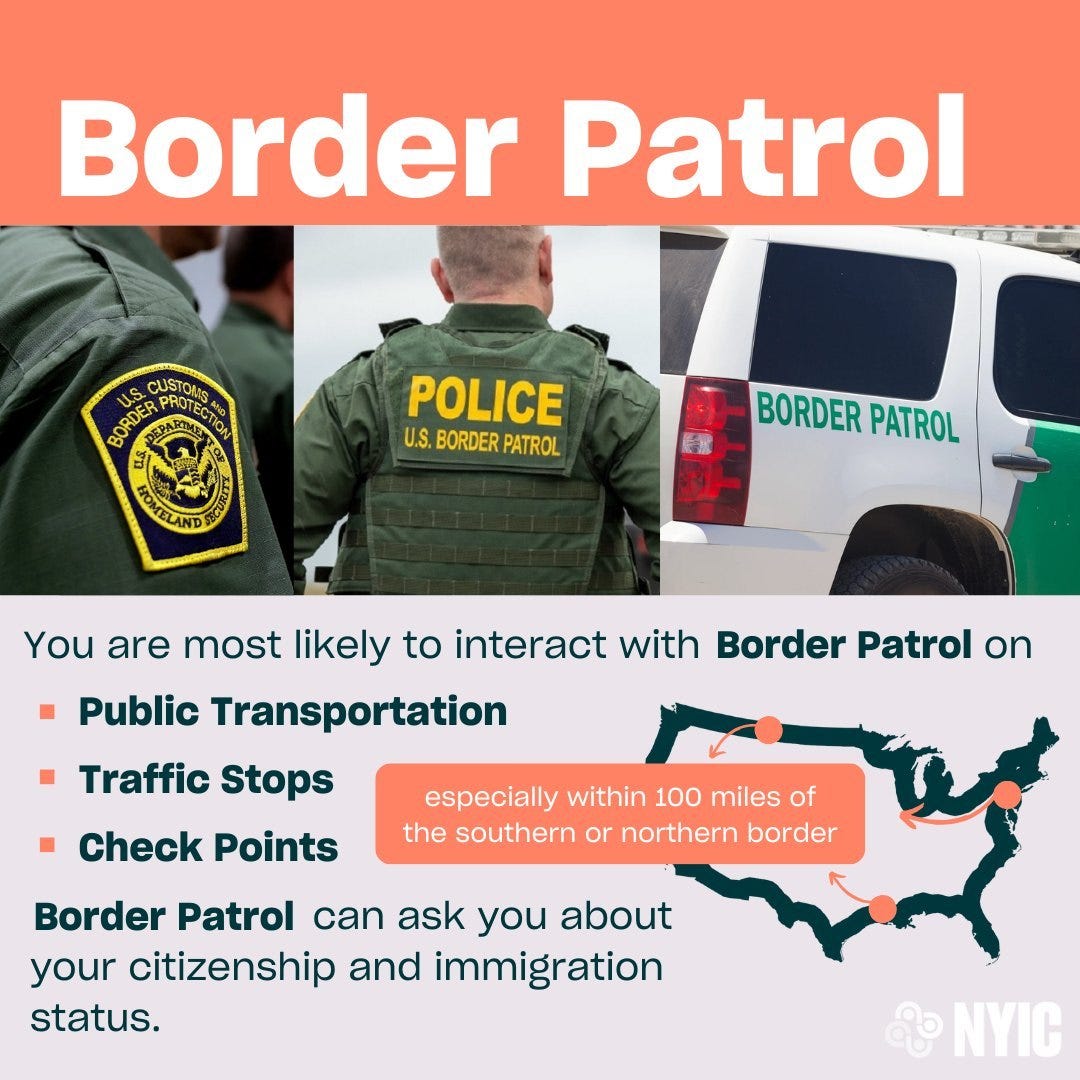Immigration Raids are Coming: What You Can Do
According to the National Lawyers Guild of Los Angeles and the National Immigration Law Center, whether you are directly impacted or a member of the community, here's what you should know.
Most advice laid out here was adapted from resources provided by the National Immigration Law Center and the National Lawyers Guild of Los Angeles.
Please note that I am not a lawyer, and you should seek an immigration attorney if you are experiencing an immediate crisis.
The new Trump administration is wasting no time implementing its crackdown on immigration. Just yesterday, Trump enabled immigration raids on sensitive areas like schools, churches, and hospitals; permitted “expedited removal” of any immigrant who enters illegally and can’t provide evidence of living in the U.S. for at least two years; and broadened the scope of ICE’s enforcement, which was previously focused on serious criminals but will now include broader categories of illegal immigrants. Perhaps even more notably, Trump placed an indefinite pause on the United States Refugee Admissions Program (USRAP) and nullified existing appointments under this program (which were already notoriously difficult to secure), subjecting perhaps thousands of people immediately and possibly hundreds of thousands more in the future to face retribution from gangs, war, famine, and imminent death in their countries of origin.
The Wall Street Journal leaked that deportation raids were set to begin earlier this week, most notably beginning in Chicago and extending to other major metropolitan areas. However, at least as of this writing, these raids have not yet appeared to materialize, possibly because the Trump administration felt that potential targets had too much notice to prepare in light of the news spreading quickly. State and local officials are seeking ways to stymie immigration actions from the federal government, but it appears that Trump’s DOJ plans to prosecute officials if they do so.
It’s important to remember in all of this that Trump’s response is cruel, draconian, and disproportionate. Undocumented immigrants commit less crimes per capita than natural born citizens, are responsible for a vanishingly small number of homicides (less than 30 last year, in spite of audacious claims by Trump), stimulate the economy, and pay taxes in spite of often being barred from benefitting from social programs. Additionally, if the ongoing fentanyl crisis is of major concern, then consider that the vast majority of drug trafficking occurs through legal citizens.
All that being said, here is what you can do to protect yourself and others in the face of increasing coercive action.
Protecting Yourself
If You Are Approached by Immigration and Customs Enforcement (ICE) or Other Law Enforcement
Remain silent. You don’t have to answer questions about your immigration status, country of origin, or anything else if you are approached. Do not lie about your immigration status, and always present valid immigration documents if you have them. You also have a right to speak to a lawyer before answering questions.
If they come to your house, stay inside and don’t let them inside without a warrant. Agents require a judicial warrant (not an administrative warrant) or your permission to enter your home. See the comparison between administrative warrants and judicial warrants below.

Image courtesy of the National Lawyers Guild of Los Angeles. Seek legal advice from a lawyer. It is best to seek legal counsel before signing or agreeing to anything or answering any questions you may not be comfortable answering. Here are some resources to help you find a lawyer:
The American Immigration Lawyers Association’s online directory
The National Immigration Project of the National Lawyers Guild’s Find-A-Lawyer tool
The Department of Justice’s list of pro bono legal service providers by state
Immigration Law Help’s directory of nonprofit, low-cost legal help by zip code and detention facility
Staying Vigilant
Reporting ICE and CBP Sightings

Know the differences between ICE and CBP:
CBP usually operates closer (within 100 miles) to the border and will put up check points, traffic stops, or operate on public transportation.
ICE will generally attempt to approach people at their homes, work, or in public.
They also will often drive in unmarked, tinted vehicles.
When reporting a sighting, confirm the agency involved, date and time, and the location of the sighting.
Reporting false sightings can stoke fear and panic.
You can report information publicly online via social media platforms and via local rapid response hotlines.
Here is a list of rapid response hotlines specific to Southern California. Find hotlines in your area by Googling “local rapid response network hotline immigration”, adding in the name of your city/state to narrow down results.
Additional Resources & Orgs.
Consider contributing to or following these organizations and/or their local chapters to keep up with ongoing protest events and mutual aid actions:





Wow